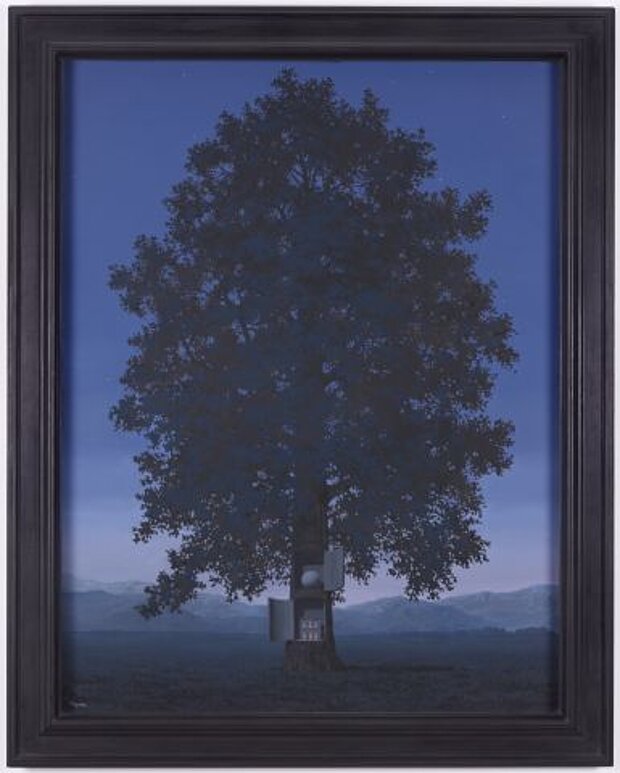
Magritte, René
La voix du sang
The Voice of Blood
1959

© mumok
| Object description | Oil on canvas |
|---|---|
| Object category | painting |
| Material |
frame:
Optium Museum Acrylic
|
| Technique |
Object:
oil paintings
|
| Dimensions |
object:
weight: 22 kg
frame:
height: 134 cm,
width: 107 cm,
depth: 8 cm
object size:
height: 116,5 cm,
width: 89,5 cm,
depth: 2 cm
|
| Year of acquisition | 1960 |
| Inventory number | B 7/0 |
| Creditline | mumok - Museum moderner Kunst Stiftung Ludwig Wien |
| Rights reference | Bildrecht, Wien |
| Further information about the person | Magritte, René [GND] |
| Literature |
MAGRITTE.A bis Z Museum moderner Kunst Stiftung Ludwig Wien Magritte Magritte. Louisiana Revy, vol. 39, no. 3, August 1999 Landschaft in der Kunst. Europäische Landschaftsmalerei des 16. bis 20. Jahrhunderts. 24 Dias und ei EL MUNDO INVISIBLE DE RENÉ MAGRITTE Museum der Wünsche Szene des Begehrens La máquina Magritte Grow : der Baum in der Kunst Magritte - La storia centrale : [in occasione della mostra Magritte - La storia centrale, Roma, Complesso del Vittoriano, 16 marzo - 8 luglio 2001] |
„Outputs from the earth growing into the sun a tree is a picture of secure happiness. In order to perceive, we have to be perfectly still like the tree. If we move it is the tree that becomes the spectator. “Let us be perfectly still then and look at a lonely tree standing amidst a vast landscape of dusk. However, nothing is at it seems. The tree opens up another unexpected world to our eyes. Three doors are set into its trunk, two of which are flung open and show a large ball and a bourgeois house with brightly lit windows respectively. René Magritte reshuffles measurements and pictorial elements. However, he does not follow the vain of arbitrary combination of the Paris surrealists but depicts an intrinsic affinity of things. He shows images of familiar things which are so combined that it ceases to be agreement with our naive and learned ideas. In the combination of seemingly complete opposites the mystery of the world reveals itself to the artist. Magritte’s paintings pose the question about the “when’s” and “where” of human existence. The poetic reconfiguration is attaint by the equation of objective reality with subjective perception. The transformation of reality into absurdity testifies at one and the same time to the manipulation of images which cannot objectively account for the visible reality.
© mumok – museum moderner kunst stiftung ludwig wien